Baby Bed Bugs (Nymphs): Facts, Colors, Sizes, Bites, and How to Identify
Bed bugs can make you hate your house because it’s unbearable to cohabit with them. Usually, eliminating these pests is never easy because they multiply at an alarming rate. Given that bed bugs depend on human blood as their food, you will not be having peaceful nights because they are active at night. Bed bugs go through three phases for a complete life cycle—egg, nymph, and adult bed bug.
Usually, a baby bed bug is a crucial stage in the life cycle of bed bugs. Nymphs ensure the continuity of these insect’s generations. But also, they are tough to control and eradicate. To eradicate bed bugs in your home, you have to understand everything about baby bed bugs. We’ll make your search easy by providing you with everything you need to know about baby bed bugs here.
What Do Baby Bed Bugs Look Like to the Human Eye?
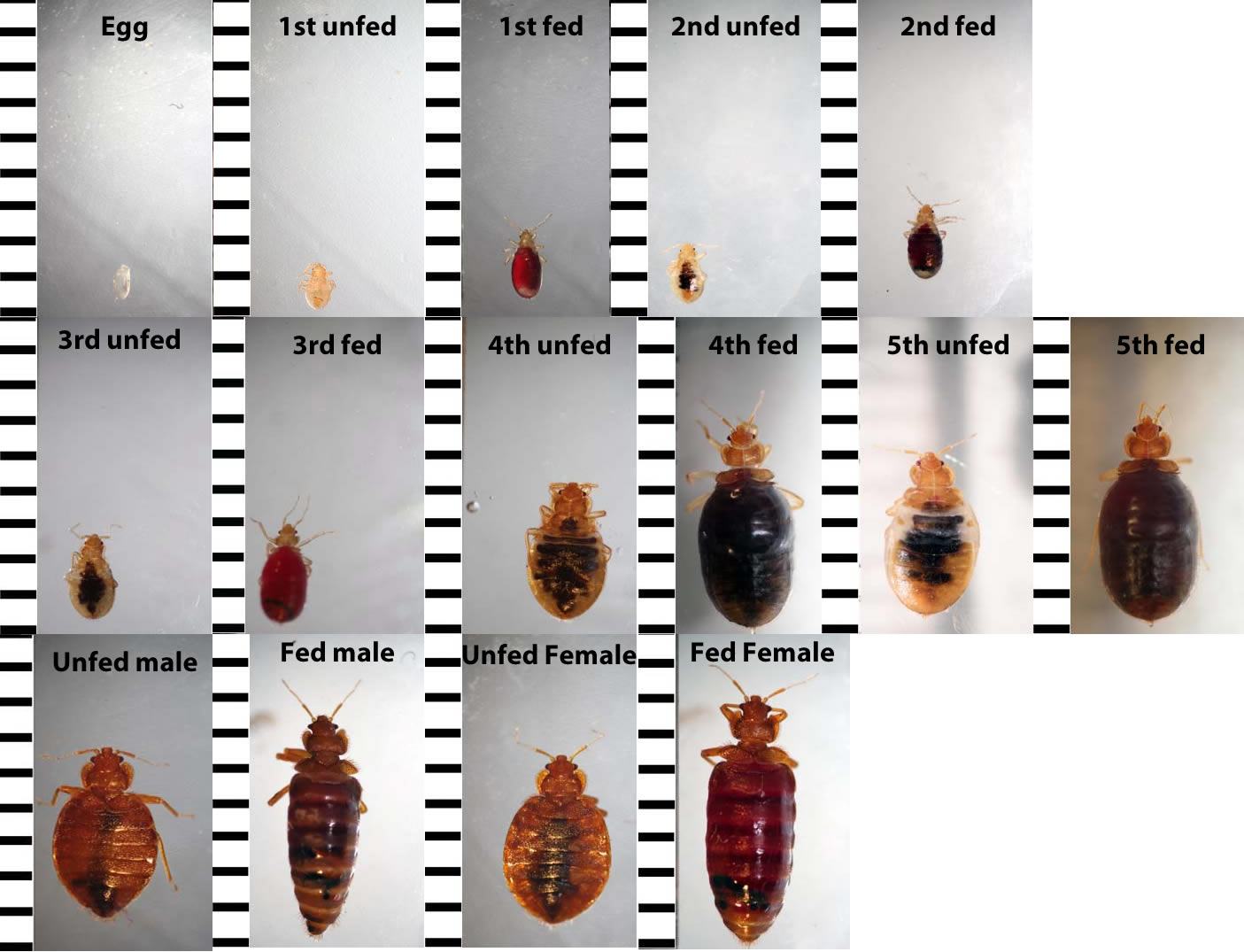
Seeing baby bed bugs is easy. The bugs are almost of the same color as most beddings making it hard for human beings to spot them. Although there’s not much difference between adult bed bugs and nymph (baby bed bug). It’s tough to see them because they hide between walls and furniture. They are oval, have no wings, and with a flat body and small eyes which the human eye cannot see easily.
They are about a quarter-inch long, but they grow daily, changing in size. Generally, there’s not much difference between a baby bed bug and an adult bed bug. Bed bugs don’t go through metamorphosis. A young bed bug is usually the rice grain size. But their growth rate takes time since they can go for over two weeks without feeding.
If you don’t know a bed bug, identifying one will be very difficult. When you get to know them seeing them around your house can be so disheartening. But you have to look to find out if they are infesting your kingdom and look for the best way to eradicate them.
What Color Are Baby Bed Bugs?
Baby bed bugs are whitish in color, although some are yellowish before feeding. But their color changes as they feed on human blood to either dark brown or reddish. When they start feeding, you will notice blood in their chest since it’s always very light and thin.
After two-three weeks, you’ll realize developmental changes as they eat for them to be able to shed off. Meaning baby bed bugs will change color as they feed on your blood.
Baby Bed Bugs Size
The younger baby bed bugs are very tiny and hard to see, more so if your beddings are of the same color as their skin. Young bed bugs have five developmental stages. In the first stage, the nymph will be around 1.5mm long, while in the second stage, they’ll be 2mm in size.
When in their third stage, baby bed bugs are 2.5mm and the fourth 3mm long. In the last stage of nymph development, the fifth stage, they’ll be 5mm long.
Can You See Baby Bed Bugs?
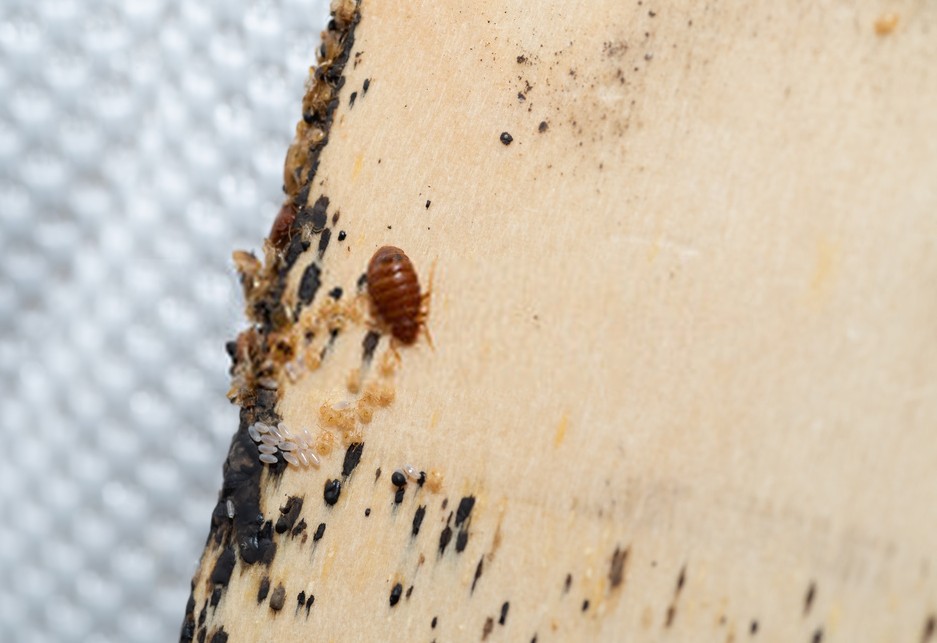
Many people believe it’s impossible to see a baby bed bug because of their small and flat body. In real life, though, it’s different since there is no distinctive difference between adult and baby bed bug except for the color because nymphs can’t transform as they change to adult bugs as it happens with other insects.
Where Do Baby Bed Bugs Hide?
Baby bed bugs are always hiding most of the time unless they want to feed. So, if you suspect their presence in your home, look at the dark and damp places around the house. You will get them on the bed, the edges of your mattress, or the openings of your bed’s frame.
If they are in another room, you’ll find them hiding on your chair’s edges, under cushions and throw pillows, and on your curtains ends. From their tiny size, baby bugs can squeeze on wall portraits or joints of the cupboard. They also squeeze on the walls joining with either ceiling or other walls.
Why Do We See Baby Bed Bugs but Not Adults?
Both baby and adult bed bugs feed on blood, but there’s a difference in their feeding rate. A baby bug requires at least a meal in a week for their molting. So, spotting them is always easier than the adult bug who can go for over four months without eating.
Chances of seeing adult bed bugs also depend on the temperature. Meaning during cold seasons, adult bugs can hide for more than four months without coming out to feed. While on higher temperatures, they become so active prompting them to come out.
What Does It Mean If You See a Baby Bed Bug?
Seeing a baby bed bug will send you into panic as it’s a sign of impending danger. Chances of having a breeding ground in your house are very high. It means more bugs are preparing to attack and feed on your precious blood.
When you see a baby bed bug, know that their mother is around. So, they will continue increasing in number and one day overwhelms you if you don’t take quick action to eradicate them. Don’t wait for the nymph to grow to an adult bug because you start laying their eggs in your territory. Immediately you see one, find their hiding place, and use the possible ways to kill them.
If you see a baby bug in public places like a hotel room or vehicle, you should not panic. It might be from a passerby’s bag or cloth. Usually, these insects have stayed for long without getting prey. So, their life span becomes shorter if they change the environment.
If you happen to see a baby bug in a public place, chances of moving to the next person around you are there. Relax and let it go its own way.
Bugs That Look Like Baby Bed Bugs
Bat Bugs
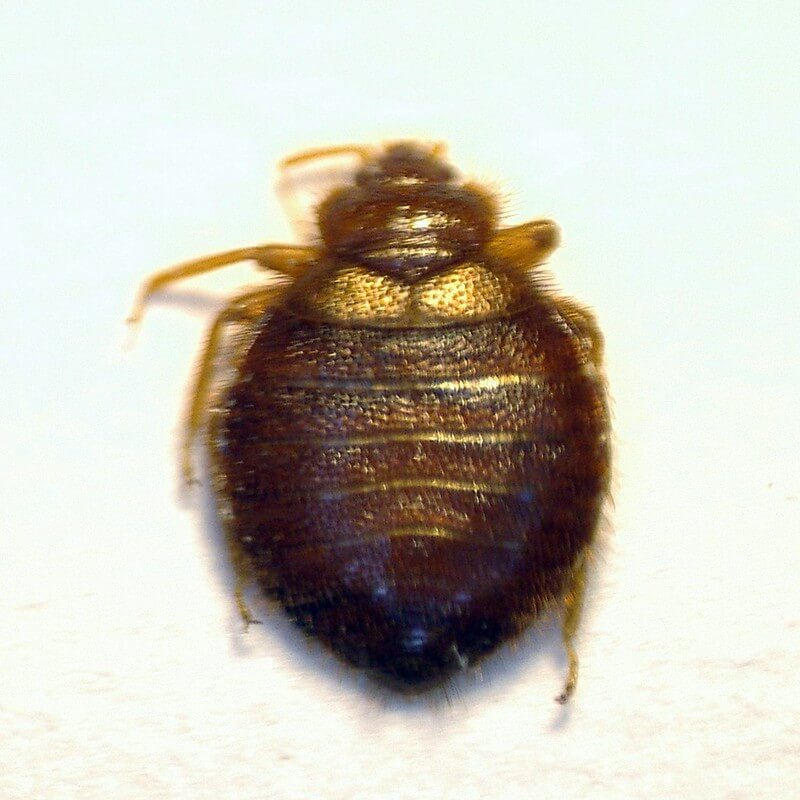
Bat bugs are like baby bugs not only by name and other body features. Both are brown in color and have the shape and size. Also, the two insects have wings, though they are not able to fly at all. What differentiates them is that bat bugs have long hair around their head. Bat bugs stay outside the house in caves and places where bats live in large numbers.
Booklice
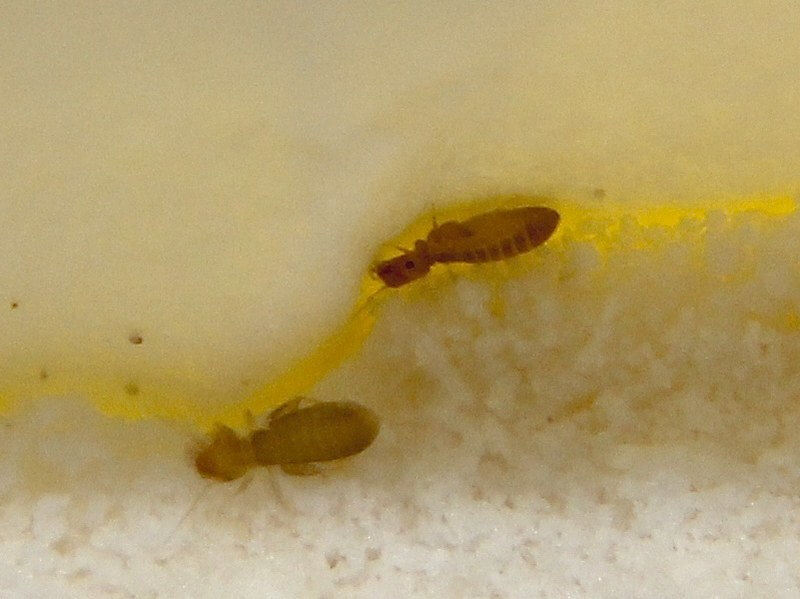
Another bug that resembles a baby bed bug is booklice. It’s about 6mm long with a lighter shade of brown or yellowish color. Booklice are always mistaken for a baby bug. But it has some unique features that you can use to distinguish them. For example, their body shape is long and slimmer than that of a termite. It also has longer antennae with smooth and soft skin making it easy to kill, unlike with baby bed bugs.
Some booklice can fly and they have different body parts that you can spot. With booklice, you will not receive bites, as is the case of baby bed bugs. Expect to see them around dark areas like under beds and damp or humid places, like the baby bed bugs.
Fleas
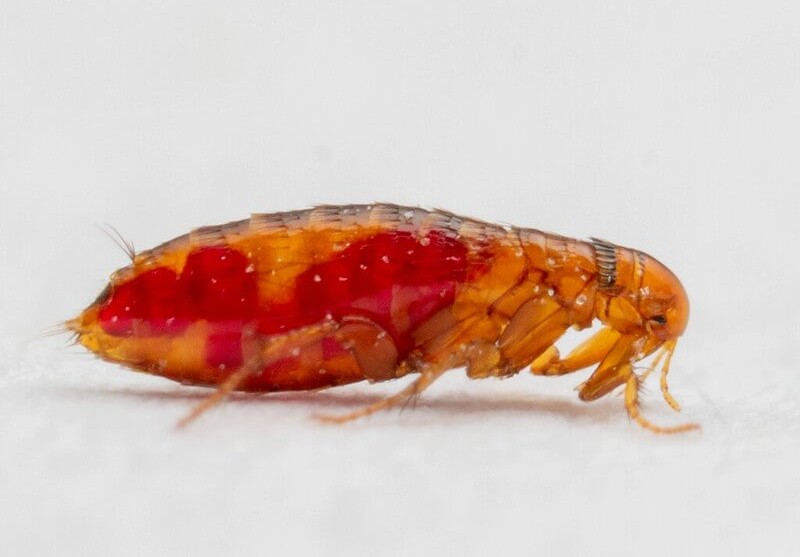
Like baby bed bugs, fleas bite and cause irritability on the skin such as itching. Both fleas and baby bed bugs (in their third stage) have the same dark brown color. But of course, they have distinctive features such as their leg size and the shape of their heads. Fleas can also jump as opposed to baby bed bugs.
Do Baby Bed Bugs Crawl Fast?
It’s tough for a baby bed bug to crawl faster as their short limb size makes it impossible to move at a higher speed. Usually, a baby bed bug will crawl at a slower pace because its exoskeleton is not well developed.
Also, baby bed bugs hardly move around and prefer spending time in their hiding places. They only get out when searching for food. Nymphs check to find out their safety anytime they want food since crawling faster is not their cup of tea
How Long Can Baby Bed Bugs Live Without Feeding
Baby bugs depend on human blood as their food. They prefer to suck their prey deep in the night when they are slow to respond. Nymphs need more energy to develop and pass through all the crucial stages. So, they’ll come out to find food to enable them to molt. In their five-week of maturing up, they need to feed once every week.
How to Get Rid of Baby Bed Bugs
It’s wise to eradicate the baby bed bugs before they start to multiply in your house. You can use diatomite, a natural rock proven to kill both the nymph and adult bedbug. It works by making the baby bed bug feel dehydrated. Diatomite also peels off their skin, causing them to bleed and die when they walk over it.
Use diatomite when it’s not a severe infestation because it works well on a smaller number of baby bed bugs. You can also use heat to kill the nymphs. Consider using a clothes dryer on full heat or a dark plastic bag that you leave to heat outside in the sun. A cold treatment can also work where you freeze the room to zero degrees. Maintain the zero temperature for around four days to freeze all the nymphs.
If these simple steps that don’t involve the use of chemicals prove to be ineffective change them. Consider using sprays or contract a professional pest control to fumigate your home.
How Long Does It Take for Baby Bed Bugs to Die?
Baby bed bugs are not as strong as adult bugs who can survive longer with no food. A nymph should feed at least a day in a week to enable them to molt at every stage until they mature. It will depend on how much food is available and the environment’s humidity for a baby bed bug to die. Usually, it takes up to five weeks to develop from the smallest size to a giant bed bug.
How to Find Baby Bed Bugs after Treatment?
It’s not strange to find baby bed bugs after you treat them from all possible corners where they hide. Usually, this happens when the treatment you used was not significant enough. Meaning the treatment didn’t kill all the bedbug eggs. So, the remaining eggs will hatch into a nymph. It’s because pesticides can only kill baby bed bugs that crawl through them and not the eggs.
When they reappear, expect to get a more significant infestation in your home than before. In case you used heat to treat them, and you still find one crawling around, you should worry. Heat is one of the most effective methods that eradicate both eggs and bedbugs for good.
Immediately you see a baby bed bug after treatment; contact a pest controller to help you out. Finding a baby bed bug is also a sign of re-infestation, so don’t give up on treating them.
Can Baby Bed Bugs Lay Eggs?
Baby bed bugs can never lay eggs though they get fertile at a high rate. Baby bed bugs take about five weeks to mature. Within these five weeks, they’ll have gone through seven different phases.
Do Baby Bed Bugs Jump?
Baby Bed bugs generally can’t fly because they have no wings. But nymphs can crawl from one place to another, searching for food and best hiding ground. Baby bed bugs cannot also jump over a long distance because of their short limbs. So, if you are planning to trap them by the bedside, they won’t jump over your trap. But instead, they’ll foolishly crawl into your trap.
Conclusion
To eradicate baby bed bugs, you should first understand how they operate. Knowing how nymphs survive gives you a clue on how to kill them because they’re the center stage of bugs’ life cycle. If you can get rid of these nuisances’ insects in their early stage before they mature, the better it will be for you. Killing the baby bed bugs can save you from unnecessary stress.
Ensure you know their hiding place, how they move around, and when they get out. Knowing this will help you choose the best treatment to use when getting rid of the baby bed bugs
